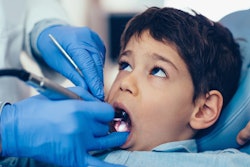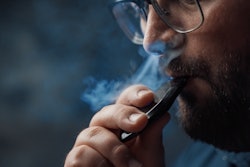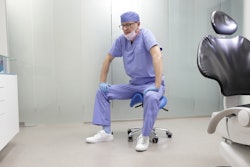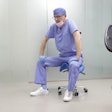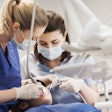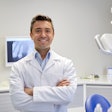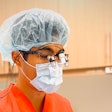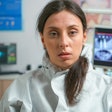
Call it magnification inundation. For years now, the dentistry trade media landscape has been loaded with loupes.
Considering its single-sighted goal of … well, sight, the rich amount of content committed to this niche is astonishingly detailed and diverse. The attention is warranted: In the past decade, the loupes segment has seen an outsized infusion of innovation.
Of course, magnification is at the heart of this. It is now well established that dental professionals of various stripes require magnification levels best suited for their particular disciplines. For example, endodontists may need magnifications in the 7.5 times or even 10 times range, while dental surgeons and implant specialists may sit better at five times or six times. Periodontists often prefer five times or six times magnification; orthodontists and dental hygienists skew a bit lower, in the three to four times range.
However, increasingly the conversations surrounding loupes have extended well beyond the clearer, closer horizons afforded by magnification. A prominent reason for this is the heightened awareness that the dental profession can be a real pain in the neck, back, and shoulders.
On one hand, it's a simple matter of enough being enough. Dental professionals are sick of stretching, straining, and suffering in silence for lack of solutions that protect their health, happiness, and career longevity, as well as their visual acuity.
The science behind the crucial role of ergonomics in dentistry is as settled as it is scary. A number of careful, compelling studies and surveys all point to the same painful conclusion: Compromised posture means compromised dental careers, and the way dental professionals have traditionally worked just isn't working anymore. More than anything, the library's worth of ink dedicated to the loupes space of late showcases the need for a paradigm shift in the way these essential eyewear solutions are designed, developed, and ultimately delivered.
A quick look at the research performed in the burgeoning dental ergonomics segment reveals how pervasive this postural problem truly is. A 2016 report published by the Canadian Dental Hygienists Association showed that anywhere from 60% to 96% of dental hygienists report some type of musculoskeletal disorder (MSD) from their work. A 2010 survey of nearly 200 dental professionals published in the British Dental Journal reported that more than half (55%) of ill health retirements were attributed to these types of injuries.
Per a 2013 survey conducted by the ADA, a study of 170 dentists in various specialties showed that nearly 3 in 4 suffered from musculoskeletal pain. And according to a book published by Dr. Bethany Valachi in 2008, as many as one-third of dentists retire prematurely due to physical ailments.
I could go on, but no need. The point is that this wellspring of research has led to an influx of information about -- and innovation in -- eyewear solutions, loupes chief among them. Regarding the importance of ergonomics, the industry has officially gone from the warning stage to the actionable stage, with the streamlining and sophistication of loupes and their ancillary visual tools at the heart of a long-ignored movement to combat MSDs.
As awareness has grown, loupes have grown up. Let's examine the next-level loupes whose value far surpasses magnification, followed by a discussion of the personalized ergonomics movement.
Seeing is relieving: Next-generation loupes
The leveled-up loupes introduced over the past few years reflect the increased responsibility of loupes and other visual tools. Specifically, magnification is merely a foundational benefit, with the desire for eyewear to help dental professionals work efficiently and painlessly now an expectation rather than an optional add-on. Today's loupes literally need to take the load off the shoulders of dentists and hygienists spending long, concentration-intensive hours in the operatory.
Understandably, a far more prominent emphasis has been placed on declination angles. "The devil is in the declination" could be an apt mantra for the newer series of adjustable declination loupes, which allow dental professionals to manually change the angle at which they access magnification.
It's the right idea, of course. No pun intended, but at first glance, a solution that allows for varying declination angles should allow dentists and hygienists to find the precise angle that affords a sustainable, relatively upright working position. We spend enough time with our heads down in our smartphones, this thinking goes, so let's limit the amount spent bent over patients.
However, there are shortcomings here that reveal many adjustable declination loupes to be a short-sighted solution -- this time, pun very much intended. Among other issues, adjustable declination angle loupes struggle to optimally integrate prescription lenses, particularly bifocal or multifocal lenses.
Many dentists -- especially those approaching middle age, when the lenses of human eyes tend to stiffen, requiring more powerful eyeglass prescriptions -- benefit from through-the-lens loupes with "lookaway space," meaning areas in their line of sight where they're looking through their prescription eyewear rather than their loupes.
Since patients are positioned below them in the operatory, for dental professionals, this typically entails distance vision at the top of the eyeglass lenses and shorter-range vision at the bottom. Unfortunately, many adjustable declination angle loupes aren't compatible with so customized a visual setup. And this word "customized" will enter the spotlight shortly.
Third, a nod should be given to the loupes innovations of tomorrow, including models incorporating forward-thinking digital enhancements such as 3D elements, artificial intelligence (AI), and virtual reality. The race is on to develop eyewear solutions that present more comprehensive vantage points marrying enhanced depth perception with the type of machine learning that bolsters the loupes' usefulness the more they become accustomed to their wearer. While the full realization of such high-tech solutions is still out of reach, recent leaps in AI in just the past 18 months exemplify how rapidly that could change.
These three examples have one overarching commonality: the role loupes are playing in the personalization of ergonomics, a concept capable of considering the myriad unique-to-wearer attributes that must be addressed to promote sustainable work-health harmony. More and more, we're learning that when it comes to proper dental ergonomics, to each professional their own.
Seeing it through: The journey to loupes customization
Most people have had the experience of something being mostly right, but not quite perfect. For the sake of an expansive metaphor that stays in the visual tools lane, consider eyeglasses. While the prescription might be spot on and the aesthetics pass muster, perhaps the frames don't sit quite right on the nose. Perhaps the wearer has a thin face that makes the frames too wide, or vice versa.
This isn't a shirt, a laptop, or even an automobile. Trade-offs for the sake of getting most of what customers want or need aren't really a tenable option when purchasing something they plan to wear for most of their waking hours.
So it is with loupes -- or rather, so it should be. Let's revisit adjustable declination angle loupes. While certainly a step in the right direction from the operatory acrobatics required with conventional dental eyewear, they usually fall short of checking all the boxes. In nearly all cases, the reason for this comes down to customization.
A solution that truly pairs a set of loupes to its wearer shouldn't require adjustment. Rather, it should know the wearer's ideal declination angle from the inception of the process and tailor the loupes accordingly.
An individual dentist's or hygienist's optimal declination angle isn't going to shift from patient to patient. The way each individual works -- their proper posture, their comfortable working distance, their eyes -- remain relatively constant. So does that person's unique prescription lens needs, meaning their visual requirement when not looking through their loupes.
The incorporation of headlights is another area where customization can be key. Beyond the fact that higher magnification levels typically require stronger light beams, there are per-person variables that can make finding a sweet spot challenging. Again, a process that understands how that particular individual works is a superior approach.
It is an unquestionably positive development that, in recent years, loupes are finally receiving the limelight they deserve. For too long, eyewear was a segment of dentistry in need of new ideas and advanced technologies. The resulting jump-start of innovation has been a valuable effort to mitigate the injury-causing contortions dental professionals have come to know and hate.
But it's time we take this elevation of the loupes segment a step further. After all, loupes are arguably the most customized product a dental professional will purchase in their careers. And as study after pain-proving study has shown, they are also among the most crucial to maintaining health, contentedness, and long-term career viability.
The personalization of ergonomics and the customization of loupes are, if not completely synonymous, certainly severely overlapping issues; the latter is essential to the former. Loupes suppliers must exhibit the prowess and patience to sell these prerequisite products one dental professional at a time, matching the magnification, working distance, prescription, and light-beam needs (among other factors) to the dedicated professionals who wear them upwards of 50 hours per week.
Loupes have come a long way. It's time they go even further.
David Kotler is head of marketing for Admetec of Haifa, Israel, which designs, develops, and manufactures custom-designed magnifying loupes and LED headlights for dentists, surgeons, veterinarians, and others for whom precision vision is crucial.
The comments and observations expressed herein do not necessarily reflect the opinions of DrBicuspid.com, nor should they be construed as an endorsement or admonishment of any particular idea, vendor, or organization.




